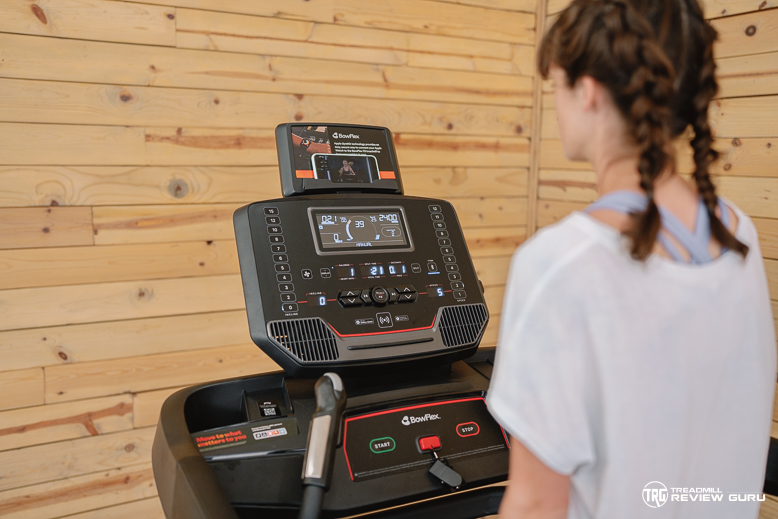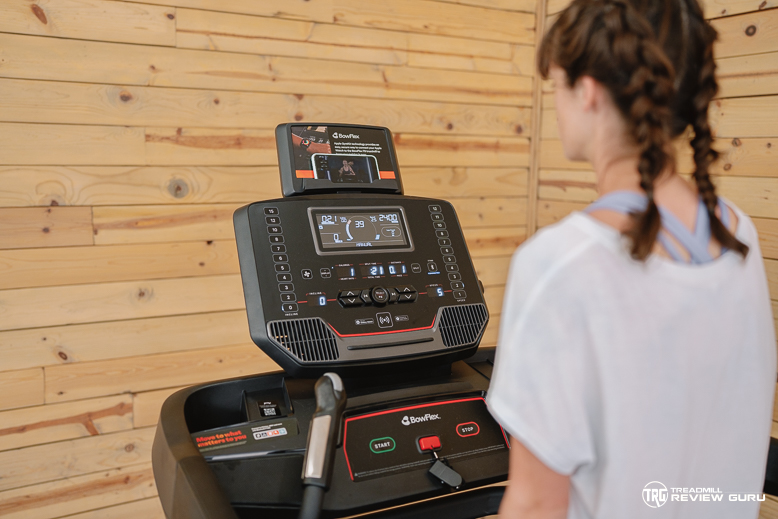Cardio, and particularly jogging, gets a bad reputation in some fitness circles. It’s looked down upon because it lacks many of the benefits conferred by weight training. While I think some of that criticism is fair and I’m a huge advocate of weight training, I think some of the fault lies in how we do cardio.
I’m a certified running coach, and I’ve been a runner myself for over fifteen years. To get the most out of walking and running on the treadmill, I think you should structure your weekly workouts the way competitive runners do, even if you aren’t dedicated to the sport at all. You don’t have to do a lot, but you can structure your training more effectively.
Below, you will find my recommendations for getting the most out of your time on the treadmill.

There’s No One Best Workout
TikTok has started many fitness and treadmill trends, and while I like the cutesy ideas that make treadmill workouts more appealing, I think they could be improved. At the very least, we need to contextualize these workouts. You can use one of these trendy workouts or another go-to workout as a key workout, but it shouldn’t be what you do every time you step on the treadmill.
On the flip side, not every workout should be an unstructured, timed walk or run. If you just hop on the treadmill and go at a casual pace that lets you scroll on your phone, you could be missing out on cardiovascular benefits. That doesn’t mean you have to ditch these easy walks; you just need more variety.
Expert Tip: If all of your treadmill workouts look more or less the same, you need more variety. That goes for walkers or runners who are working really hard and for those going at an easy pace.
How Much Should Be Hard And How Much Should Be Easy?
In the running world, an 80/20 split between easy efforts and hard efforts is often cited as ideal for progressing fitness without getting injured. Whether you divide your total running time or mileage to arrive at that split is up to you.
Now, if you don’t do cardio that often and wouldn’t call yourself a runner per se, the 80/20 split might not be exactly what you need. If you only do two treadmill workouts per week with a couple of days of rest in between, you can likely get away with two intense workouts. For most treadmill users, I recommend a split of 20/80 to 33/67. The more often you train, the closer you should be to the 20/80 split.
What Types of Workouts Should You Do?
There are tons of different types of treadmill workouts you can do. My recommendation to add variety is genuine. I’m going to provide a basic template for structuring your weekly treadmill workouts, but you should fill in the template with any workout that fits into the prescribed intensity.
The Easy Base of Your Training
Unless you are only doing a few short treadmill workouts per week, the bulk of your treadmill time should be spent at an easy intensity. This includes your warm-up and cool-down, as well as any additional treadmill walks or runs outside of your key workouts. It also includes the rest interval in any interval workouts you do
The key to doing an easy intensity workout or interval is to ensure that it is easy enough. I advise going slower than you think you should. Try to keep your rate of perceived exertion (RPE) at a three or lower.
Key Workouts
My biggest criticism of the typical cardio workout is that it isn’t purposeful, and it doesn’t progress from week to week. To upgrade your treadmill training, pick two workouts that are challenging and that you enjoy.
While a fad workout like 12-3-30 can be your starting point, we want to make this workout better by progressing it week after week. Repeat this workout weekly or every other week, adding .1 mph to the speed. Alternatively, you can play around with adding faster-paced intervals to the workout. If speed isn’t your thing, increase the incline (if your treadmill has the option) or add a weight vest. You could even add 1 minute to the time.
This modification of the 12-3-30 workout is just one example of how you might progress a workout. Many treadmills also have preprogrammed workouts with different levels of difficulty. Try doing one of these workouts per week, progressing through the levels as you adapt to them.
To nail your treadmill training week after week:
- Progress your workouts. Every week or two, add a rep, time, distance, speed, or incline to your workout.
- Train at a high enough intensity. To ensure your workouts are challenging enough, aim for an RPE of 6 to 7 or higher during the challenging portions of the workout (whether that’s the entire workout or just intervals).
- Limit your hard workouts to 2x per week. Training at too high an intensity increases your risk of injury and prevents you from recovering well enough to progress your fitness. What you think is helping you improve may actually hinder your progress.
Sample Week of Treadmill Workouts
I like to structure my weeks by starting with Monday, so I can move workouts around on the weekend without affecting my weekly total. You are welcome to rearrange the days in the way that makes the most sense for you.
Monday
Key Workout #1: An interval workout that emphasizes speed.
Warm-up: 5 minutes at an easy pace, gradually increase speed from a leisurely walk to a speed that puts you at an RPE of 3 to 5.
Workout: 8 to 10 repetitions of 1 minute at an RPE of 2 to 3, followed by 30 seconds at an RPE of 6 to 8.
Cool-down: 5 minutes of walking or running at an RPE of 1 to 3.
Tuesday
Rest or train at an easy intensity for up to 30 minutes.
Wednesday
Rest or train at an easy intensity for up to 30 minutes.
Thursday
Key Workout #2: Choose an interval workout that emphasizes incline.
Warm-up: 5 minutes at an easy pace, gradually increase speed from a leisurely walk to a speed that puts you at an RPE of 3 to 5.
Workout: Set your treadmill to a 12% incline or the highest incline you can sustain for 30 minutes. Set the treadmill to 3 miles per hour, give or take 0.5 miles per hour, depending on your fitness. Add a 15-second burst of speed every 3 to 5 minutes for an additional challenge. You can walk or jog.
To modify this workout for running, you can set the speed higher and adjust the incline lower as needed. However, prioritize challenging yourself with the incline rather than the speed.
Cool-down: 5 minutes of walking or running at an RPE of 1 to 3.
Friday
Rest or train at an easy intensity for up to 30 minutes.
Saturday
The goal of this workout is to improve cardiovascular endurance.
Long Steady Effort at an easy pace. Train for 30 to 60 minutes at an RPE of 3 to 4.
Sunday
Rest or train at an easy intensity for up to 30 minutes.
A Coach’s Advice
You can substitute any workout on the two days I assigned to be workout days in the sample plan above. If you like to train with iFIT, Peloton, or another platform, those are the days that you should choose a more challenging class.
While intervals are a go-to for me and many other walkers and runners, don’t be afraid to try challenging workouts with a sustained pace. Just like a weight lifter might know their maximum squat, or you might know the number of push-ups or pull-ups you can do, it might be good to know your mile time. Challenge yourself to beat your personal best in the mile, whether you walk or run it.
Don’t forget to rest. Make your workout days hard enough that you want a rest day, and don’t be ashamed to take it. Your body adapts to your training load and heals during rest. Rest is as important as your workout days.

 АРХИВ
АРХИВ БОКС И ЕДИНОБОРСТВА
БОКС И ЕДИНОБОРСТВА Игровые виды спорта
Игровые виды спорта КАРДИОТРЕНАЖЕРЫ
КАРДИОТРЕНАЖЕРЫ МАССАЖНОЕ ОБОРУДОВАНИЕ
МАССАЖНОЕ ОБОРУДОВАНИЕ МЕДИЦИНА РЕАБИЛИТАЦИЯ
МЕДИЦИНА РЕАБИЛИТАЦИЯ СВОБОДНЫЕ ВЕСА
СВОБОДНЫЕ ВЕСА СИЛОВЫЕ ТРЕНАЖЕРЫ
СИЛОВЫЕ ТРЕНАЖЕРЫ Соревновательное оборудование
Соревновательное оборудование СПОРТ ДЛЯ ДЕТЕЙ
СПОРТ ДЛЯ ДЕТЕЙ СПОРТИВНОЕ ПИТАНИЕ И АКСЕССУАРЫ
СПОРТИВНОЕ ПИТАНИЕ И АКСЕССУАРЫ УЛИЧНЫЕ ТРЕНАЖЕРЫ
УЛИЧНЫЕ ТРЕНАЖЕРЫ ФИТНЕС И АЭРОБИКА
ФИТНЕС И АЭРОБИКА